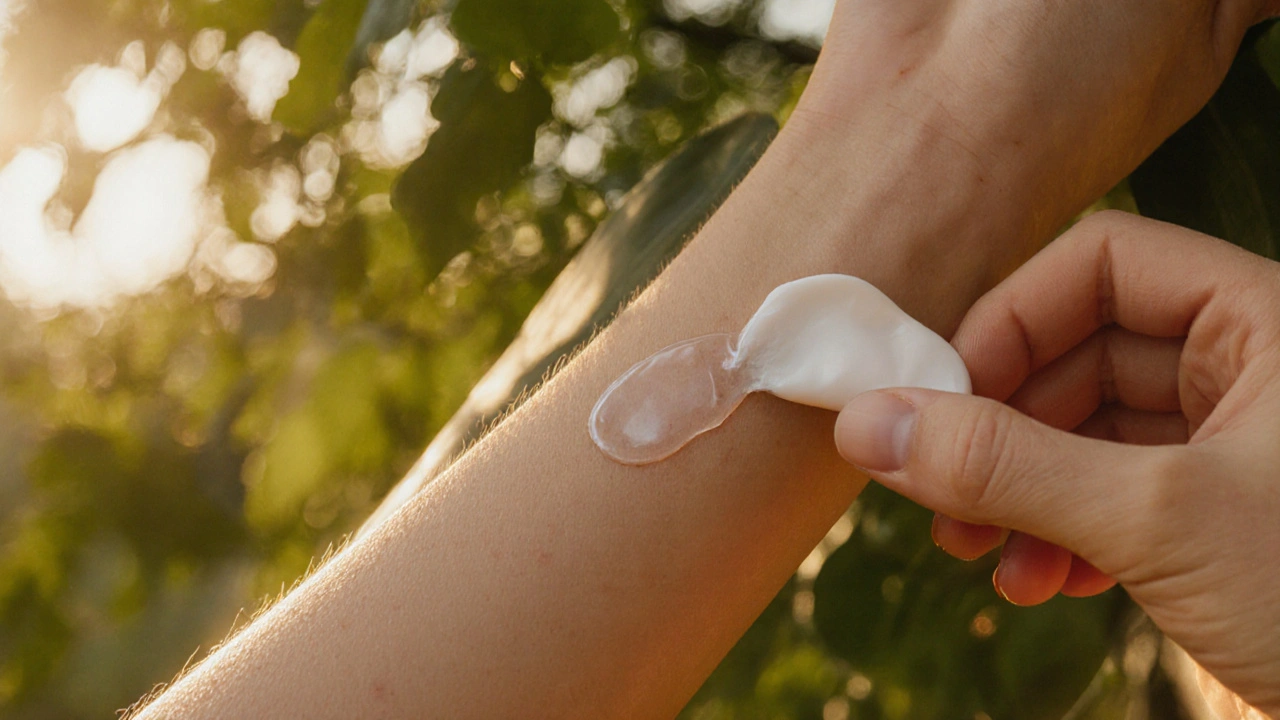Sun Protection: Your Essential Guide to Safe Skin
When working with Sun Protection, the practice of shielding skin from harmful ultraviolet (UV) rays. Also known as solar safety, it helps prevent burns, premature aging, and skin‑cancer risks while letting you enjoy the outdoors responsibly. Most people think a quick dab of lotion does the trick, but effective sun protection is a blend of habits, products, and timing. In this intro we’ll break down the core pieces you need to know, from the science of UV radiation to the right SPF for your lifestyle.
Key Elements that Make Sun Protection Work
One of the most common tools is Sunscreen, a topical product that absorbs or reflects UV light. Look for the label “broad‑spectrum” – that tells you the formula guards against both UVA (aging) and UVB (burning) rays. The second cornerstone is understanding UV Radiation, the invisible energy from the sun that reaches Earth. UVA can penetrate clouds and glass, while UVB peaks around midday and varies with altitude. Knowing when each type is strongest lets you plan shade breaks, clothing choices, and re‑application times.
Another critical factor is SPF, Sun Protection Factor, a rating that measures how long you can stay in the sun before burning compared to unprotected skin. An SPF 30 blocks about 97% of UVB, while SPF 50 blocks roughly 98%. Higher numbers don’t mean 100% protection; they just buy you a few extra minutes. Pair the right SPF with generous application – a nickel‑sized dollop for the face and about an ounce for the whole body.
Beyond topical products, Vitamin D, a nutrient your skin makes when exposed to sunlight often enters the conversation. While sun exposure does boost vitamin D, you can meet daily needs through diet and supplements without risking skin damage. Balancing safe sun habits with adequate vitamin D intake is a smart health move, especially for those living in higher latitudes or spending most time indoors.
Putting these pieces together creates a simple formula: understand the UV environment, choose a broad‑spectrum sunscreen with appropriate SPF, apply enough, reapply every two hours, and complement with protective clothing and shade. This approach not only reduces immediate sunburn risk but also lowers long‑term chances of skin cancers like melanoma. If you’re on medication that makes you photosensitive—like certain antibiotics, diuretics, or antipsychotics—your protection needs may be higher, so talk to your doctor about extra precautions.
Below you’ll find a curated set of articles that dive deeper into related health topics, from how specific drugs interact with sun exposure to practical tips for everyday protection. Browse the collection to arm yourself with the knowledge you need to stay safe under the sun while still enjoying everything the outdoors has to offer.

Sun Protection for Scar Prevention & Healing: Why It Matters
Learn why protecting scars from sun exposure is crucial, how to pick and apply the right sunscreen, and extra tips like clothing and timing for optimal scar healing.
September 29 2025